Tour of the Casa de la Estrella Museum/My Actifit Report Card: April 3 2025 [Eng-Spn]
Greetings, everyone from Hive and the @actifit Community, I’m telling you that I was recently in the city of Valencia with my son to complete some paperwork to certify his technical high school diploma and revalidate his grades. I was in the middle of it when I noticed a very old house located on a corner in the city center, named:
“Casa De La Estrella Museum”
At the time, I couldn’t go in because I had other errands to run with my son. However, I asked for information and they gave me the opening hours, and I decided to come back a few days later.
⌚️⌚️⌚️Days later⌚️⌚️⌚️
So today I got active with my pass counter, and here I am, bringing you my experience in this beautiful place.
At first glance, it doesn’t look like it, but at the entrance, there’s a huge wooden door that welcomes you. Upon entering the premises, the first thing that catches your eye is the majestic wooden ceiling.
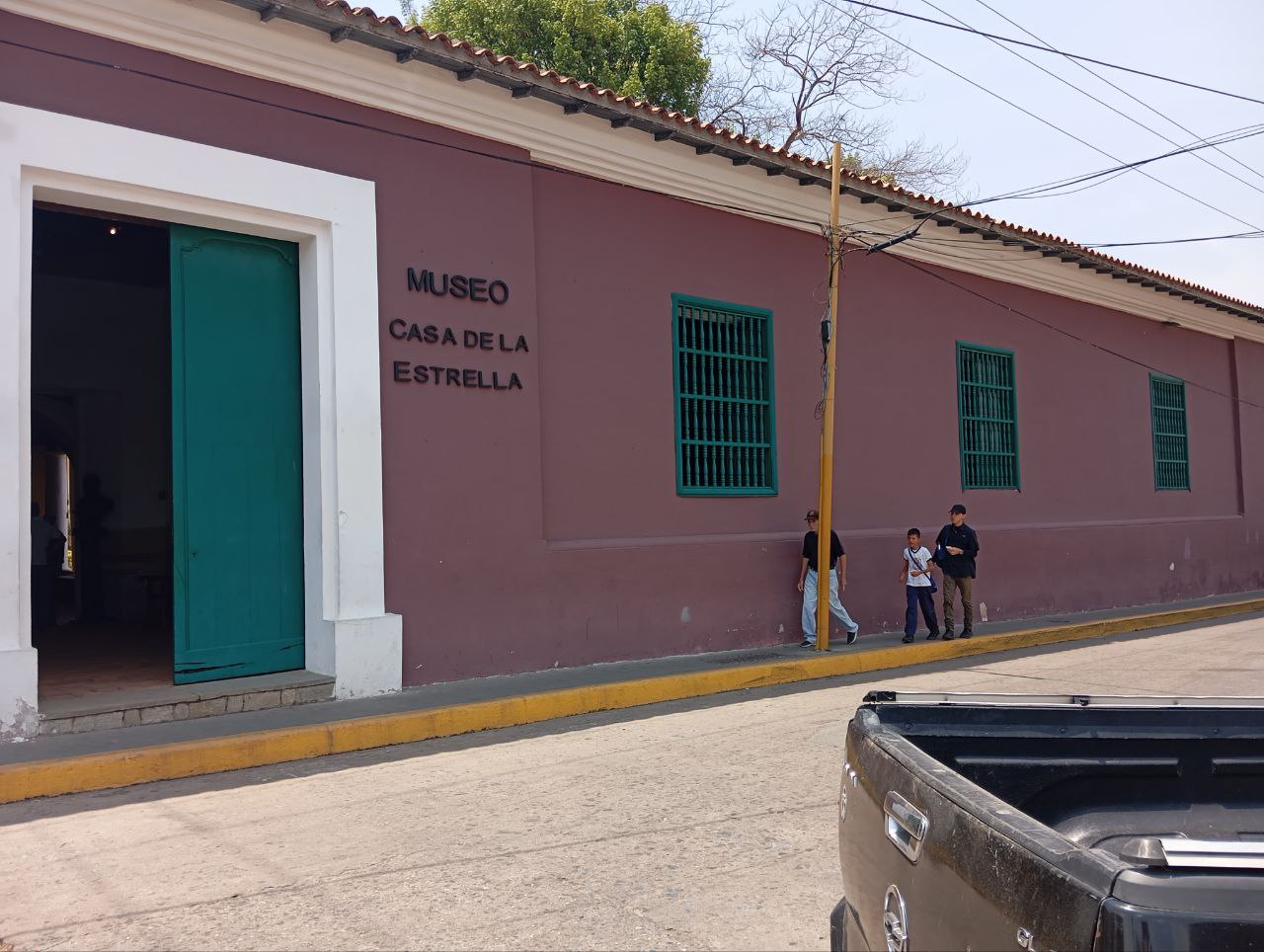
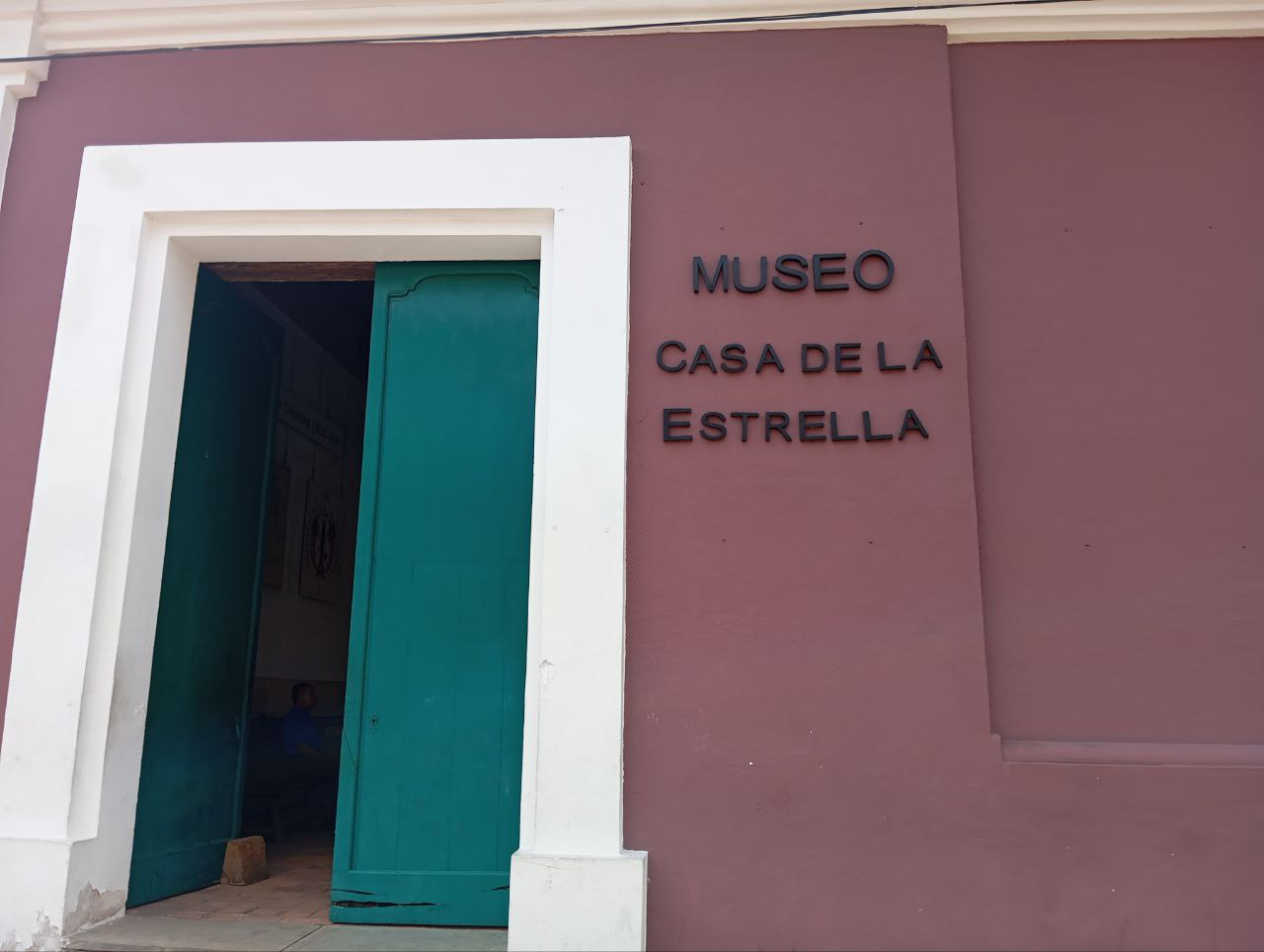
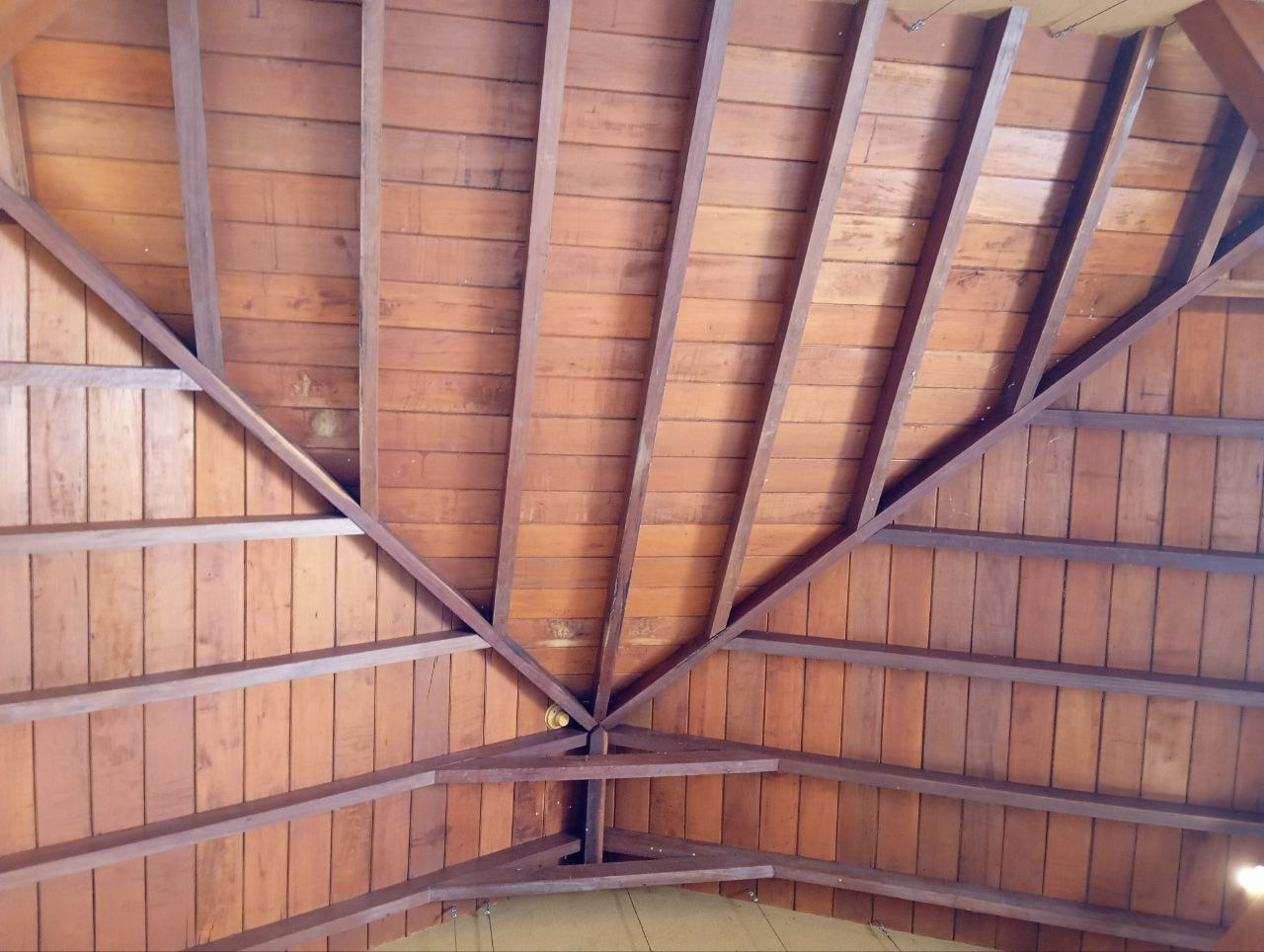
There is A sort of reception room containing two colonial-era chairs and a wagon wheel that probably belonged to General José Antonio Páez.
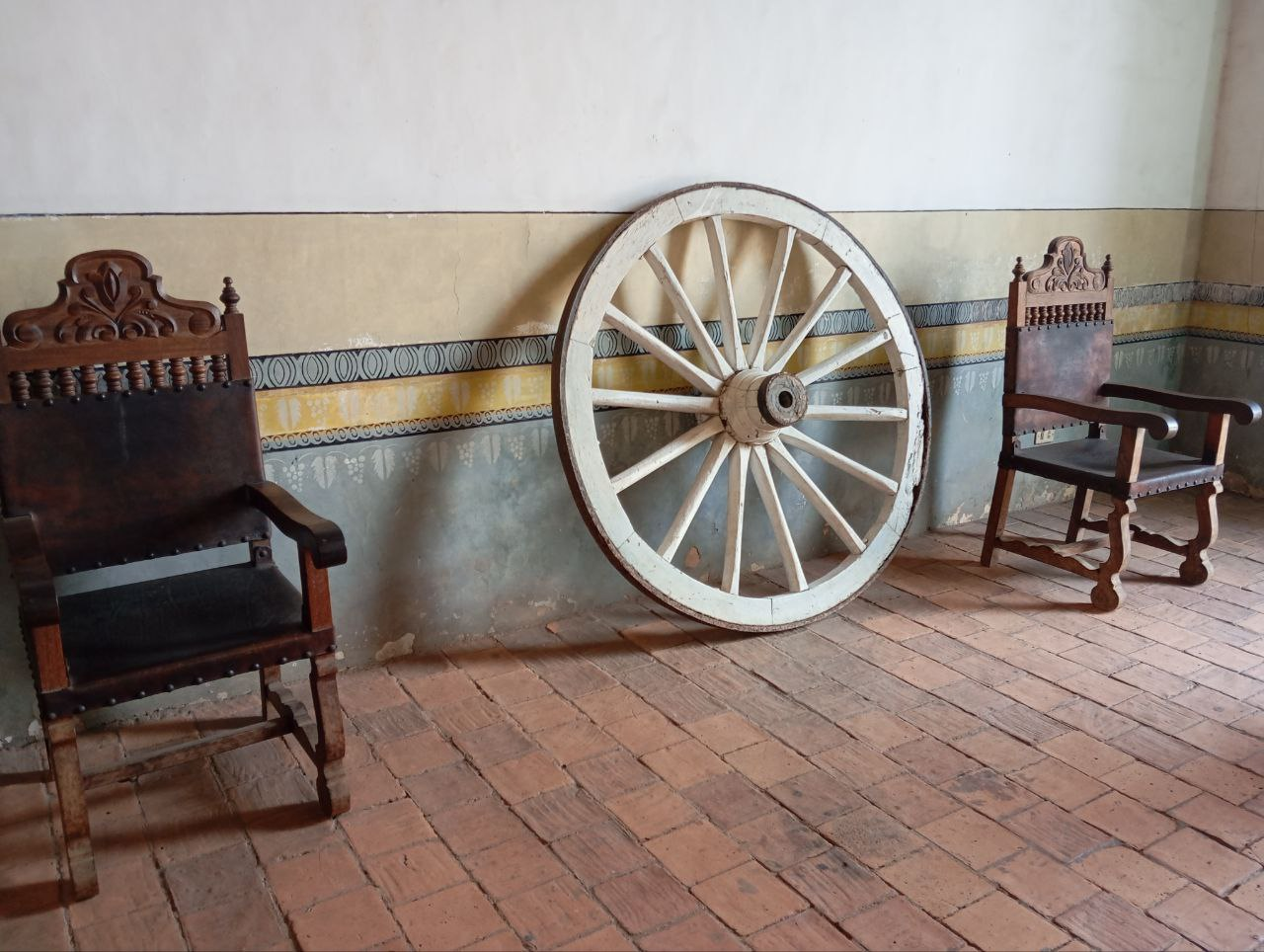
In that same reception area, across the entrance, are these two wonderful busts. One is of our Liberator and Father of the Nation, Simón José Antonio de la Santísima Trinidad Bolívar Ponte y Palacios Blanco.
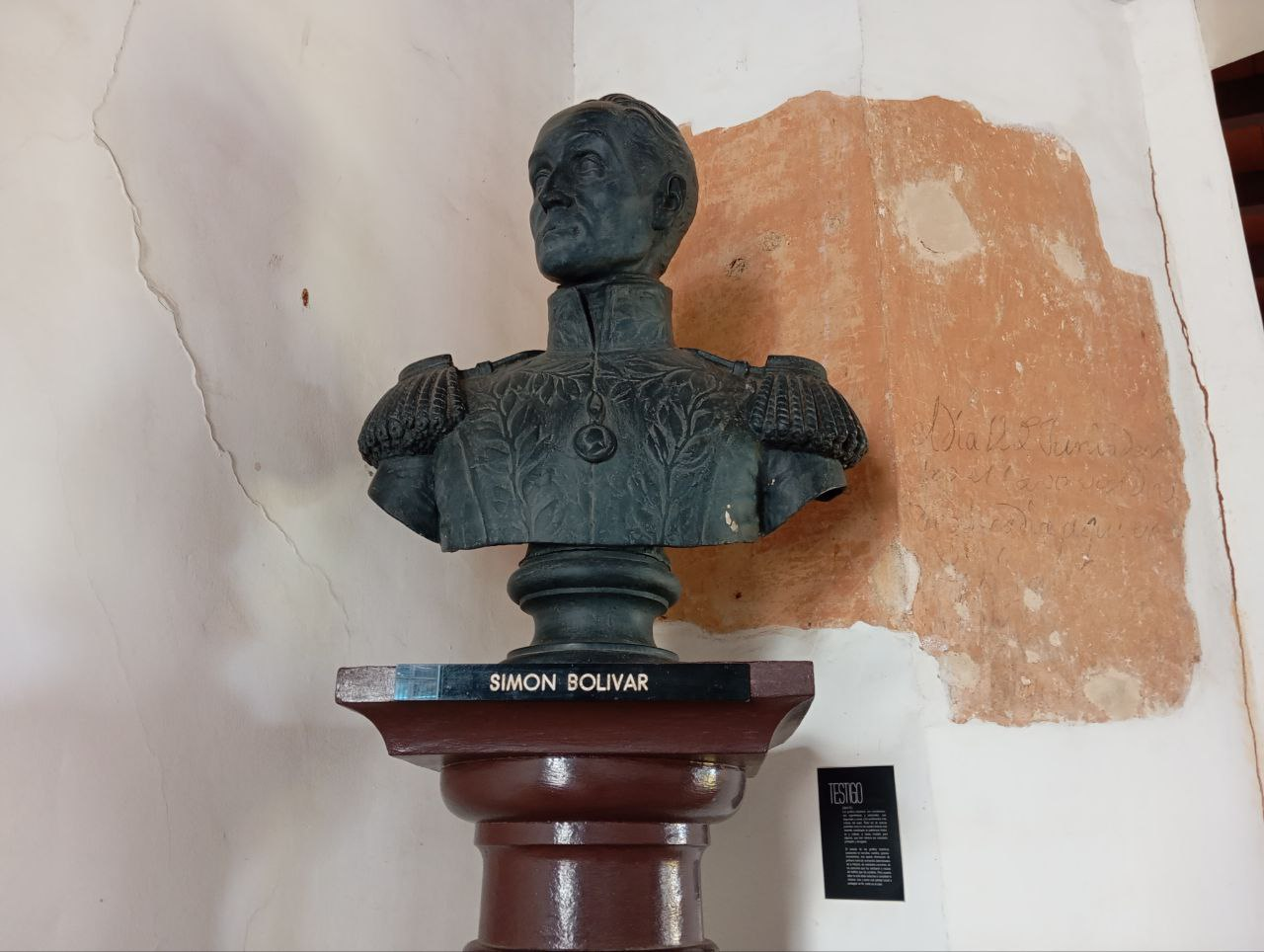 |  |
|---|
And this other one corresponding to General José Antonio Páez, Venezuelan military man and politician who fought for the independence of Venezuela and was president of the country on three occasions and one of those who led the La Cosiata movement in Venezuela, frustrating the Great Dream of our Liberator: The union of Gran Colombia. #
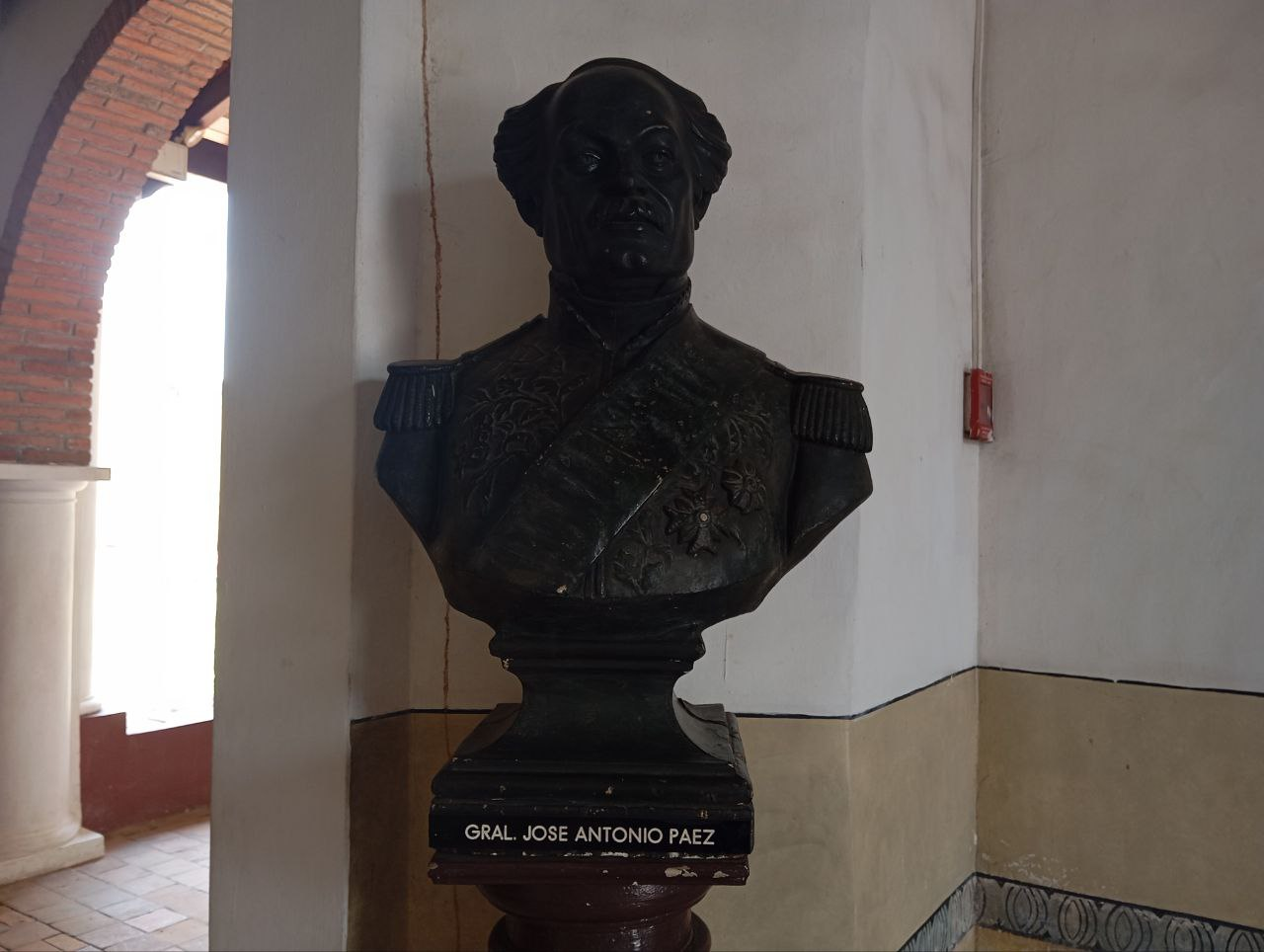
For me, two greats in history, each with a different vision but with a common goal: fighting for freedom.
In this small entryway, there were also some prints hanging on the wall.
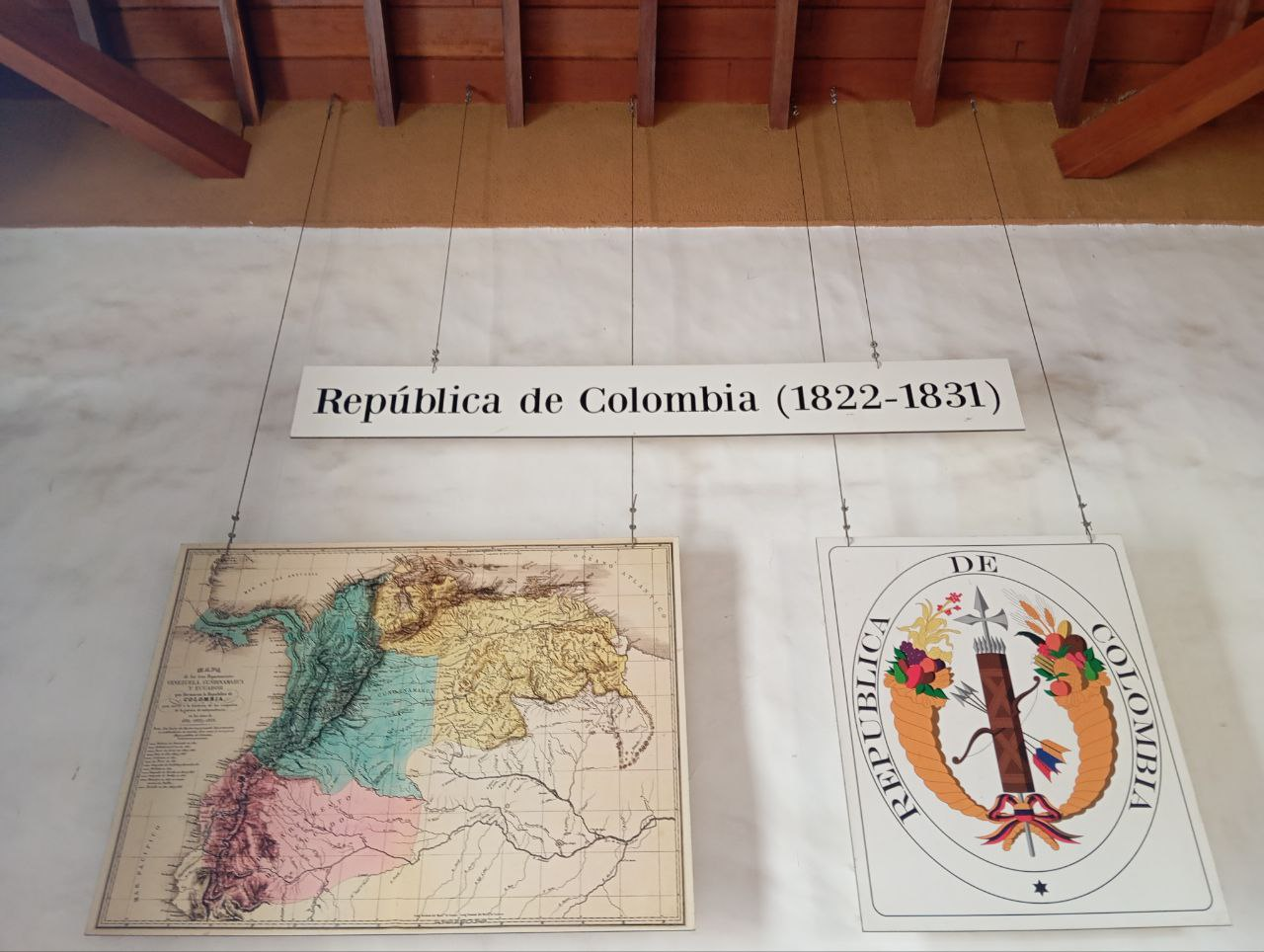

I was amazed that there was so much history in so few square meters. I was in the paradise of the history of my beloved country. Everything I was witnessing was centuries old.
My surprise was even greater when I saw this splendid central courtyard located within the Great Colonial House. It transported me back to the colonial era, and I imagined myself as María Teresa Josefa Antonia Joaquina Rodríguez del Toro Alayza, angrily waiting for Simón Bolívar to return early from his battles for independence to dine on his favorite dish, palo e pique, which consists of a traditional sofrito (fried potato) accompanied by beans, rice, and pork rinds.
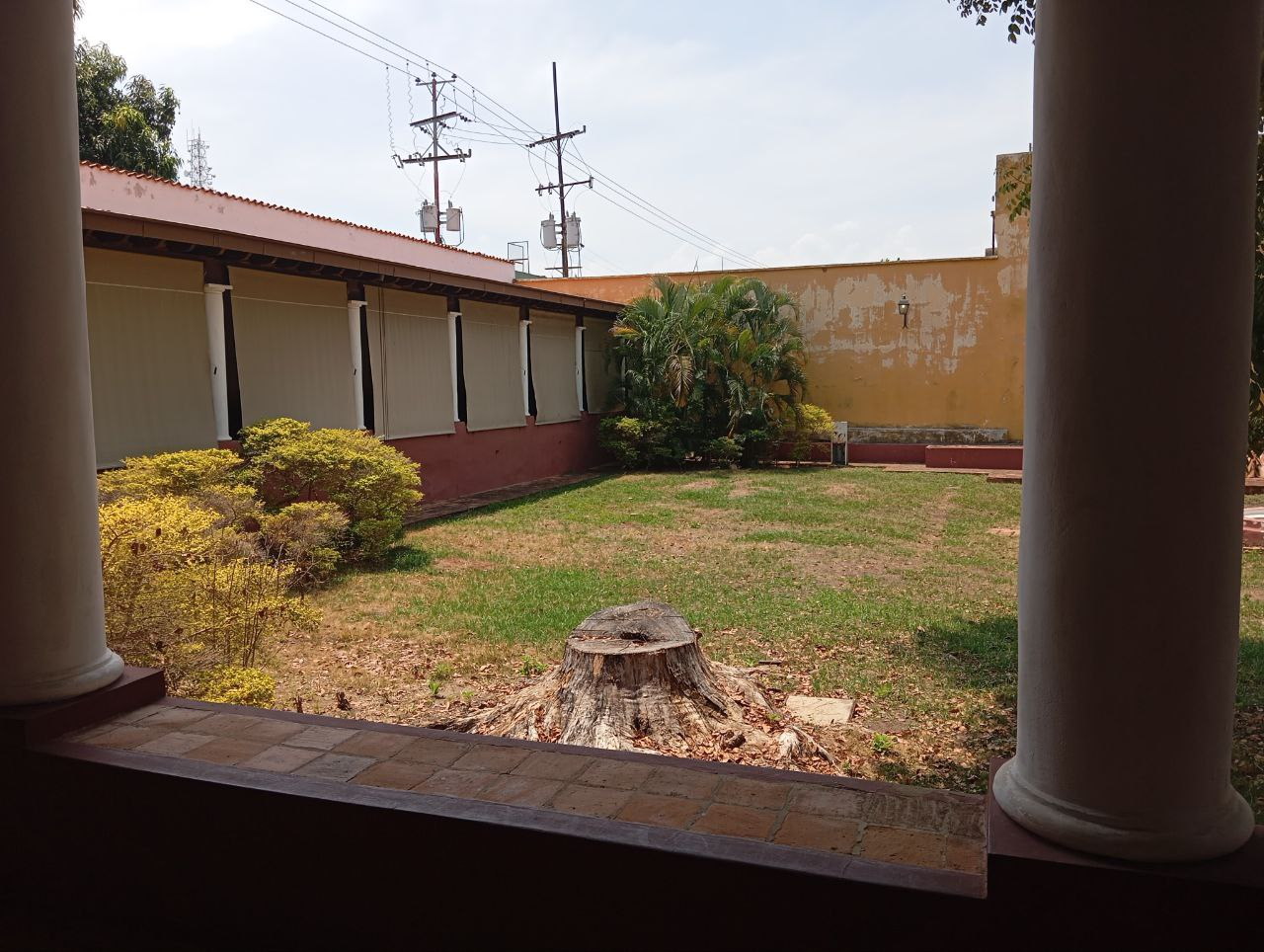
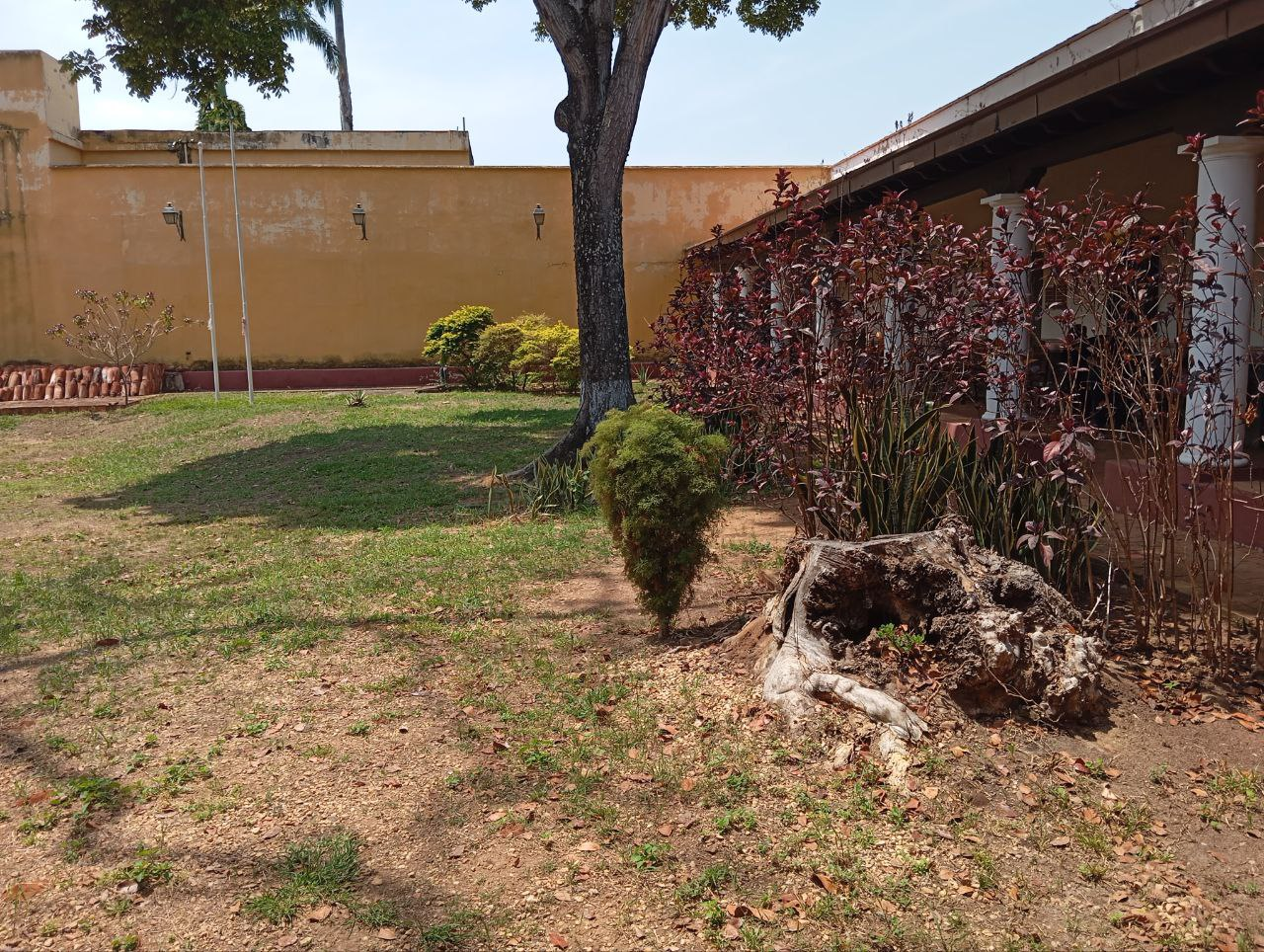
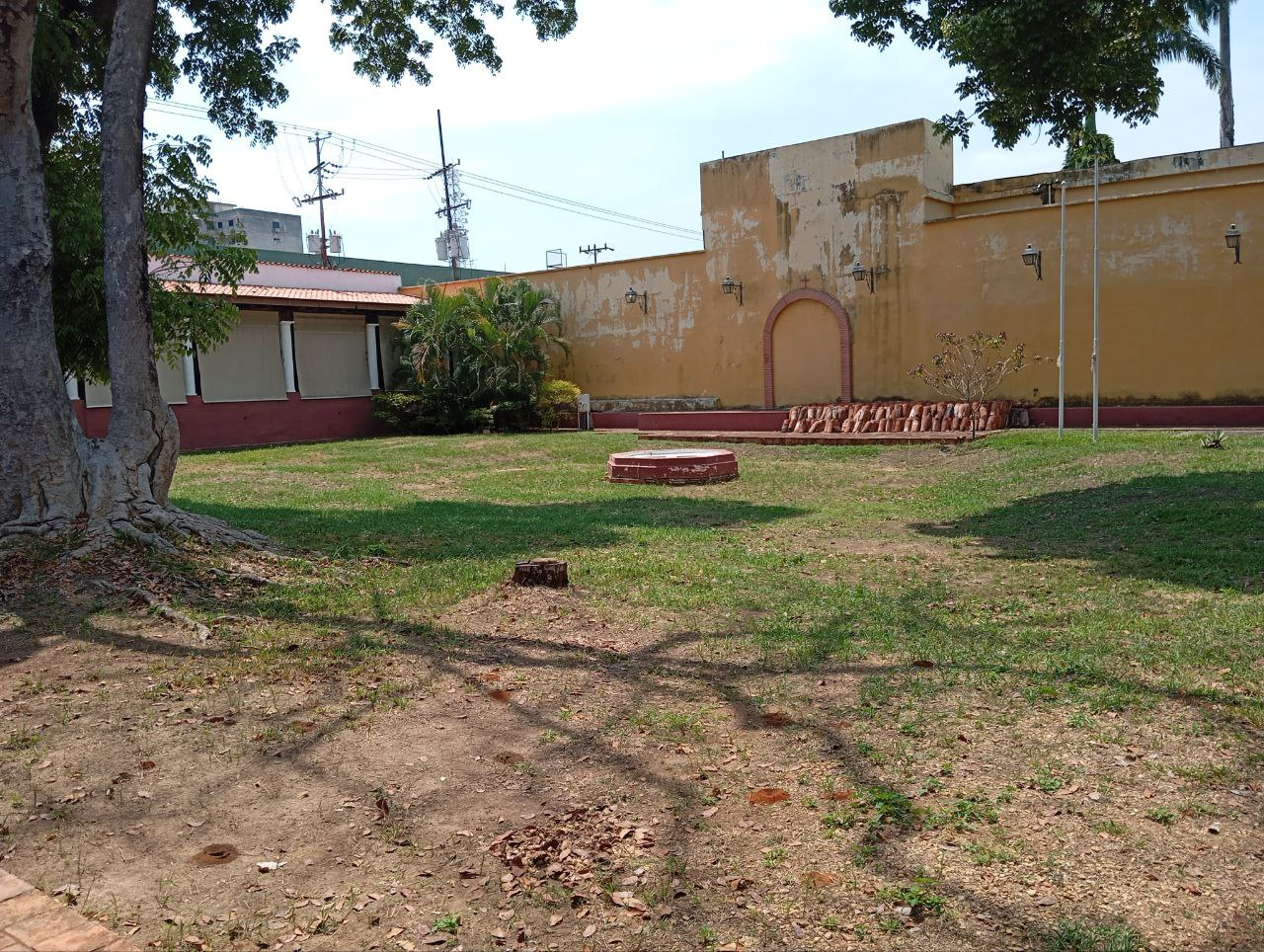
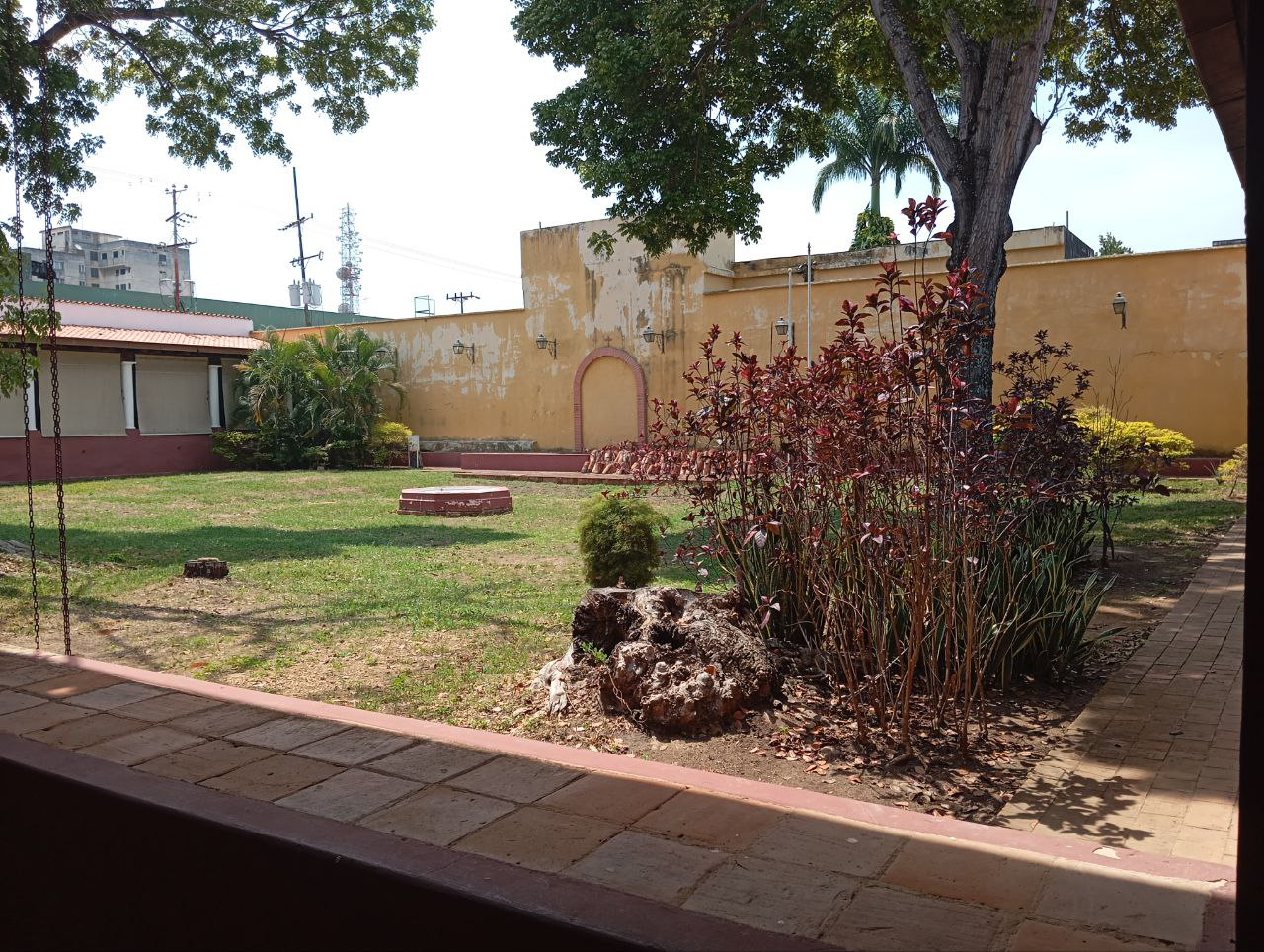
I was deep in those thoughts when I saw a hallway leading to a dreamlike staircase. I was amazed by what my eyes saw there. I was tempted to go up and see what was hiding at the end of the stairs, but caution won out. And the door at the top of the stairs was very tightly closed, as I later learned. #
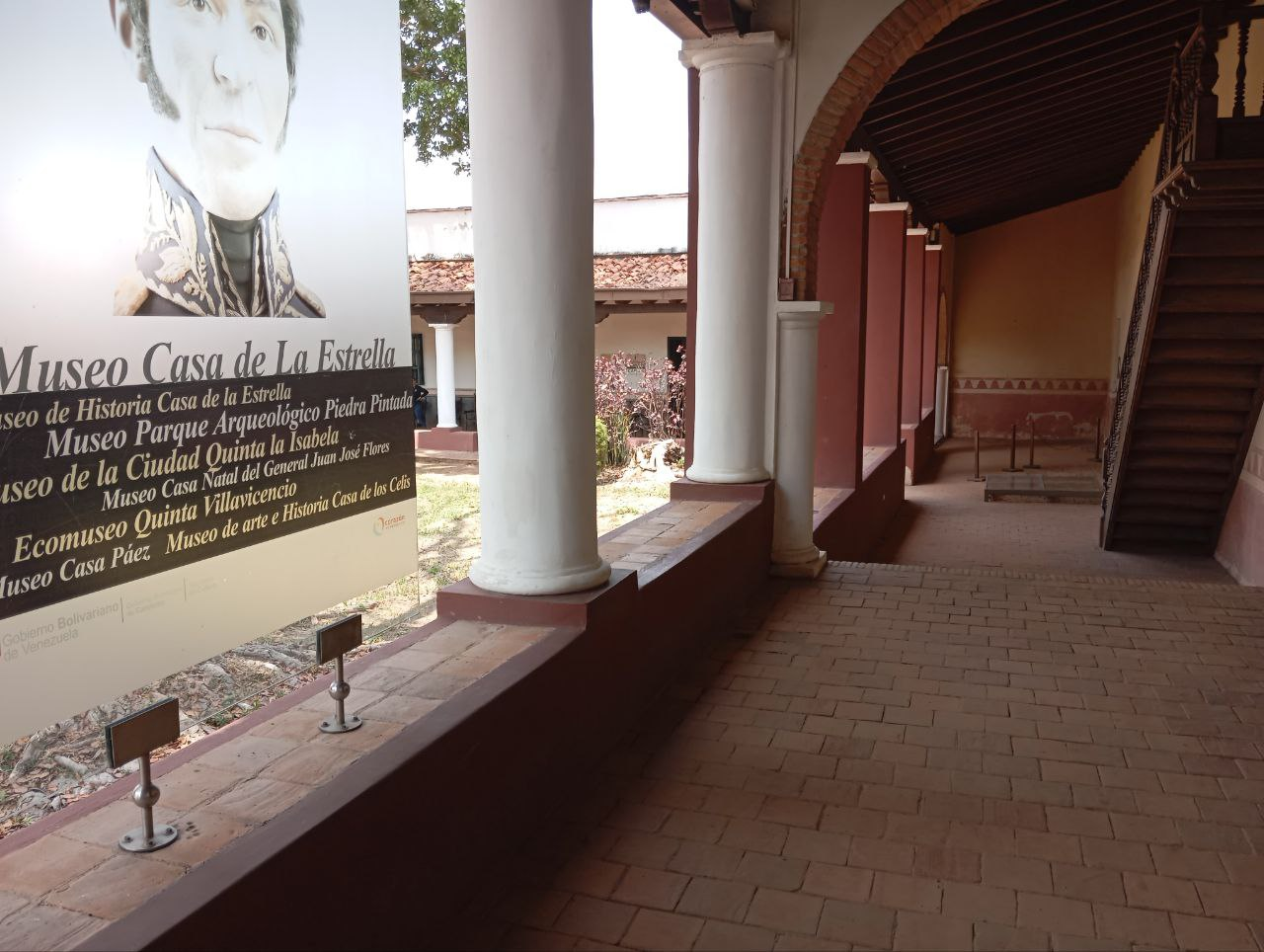
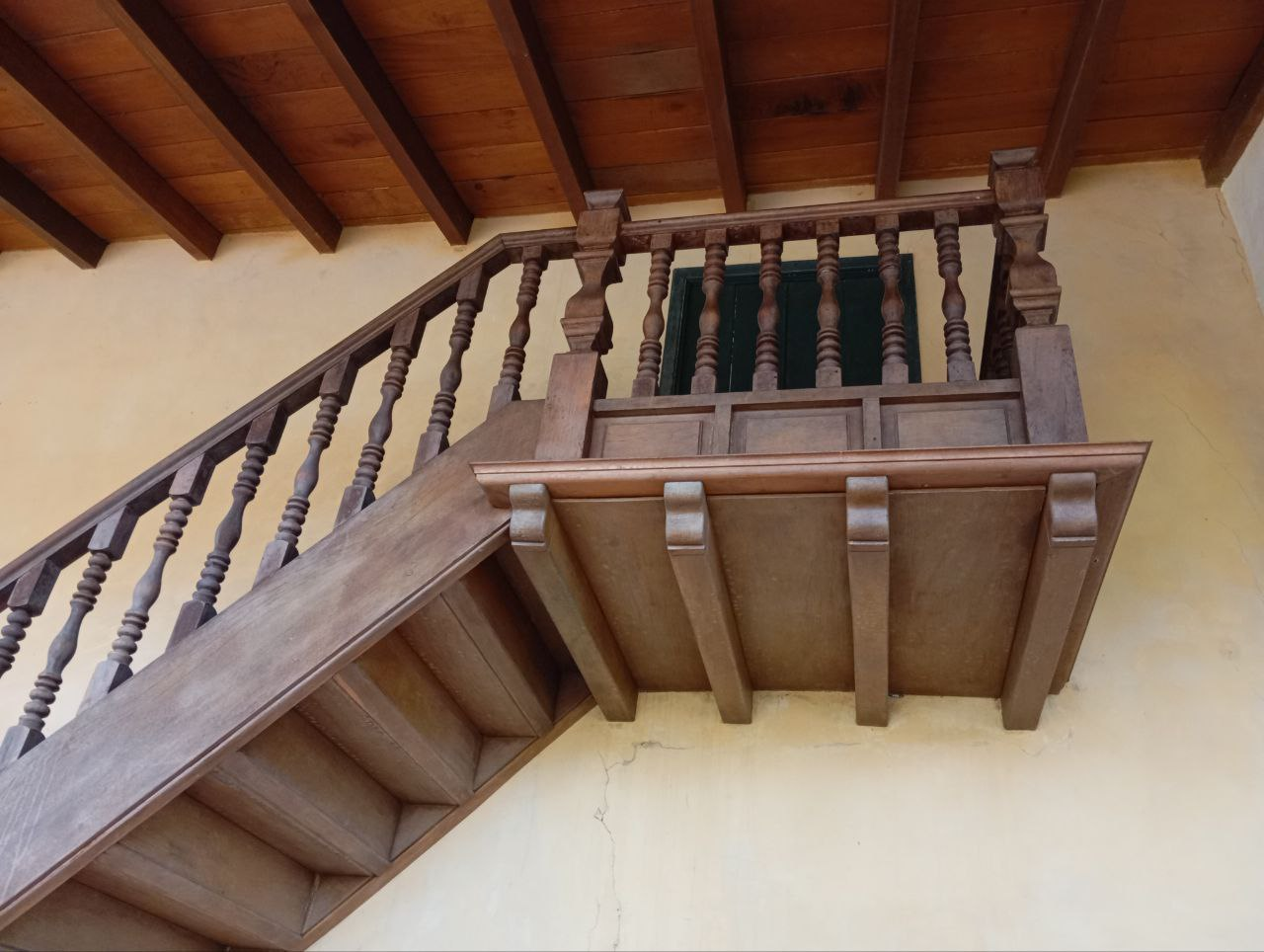
At the end of that hallway, I met two girls in charge of the museum who very kindly asked me why I was taking those photos and why I was so amazed by this place. I explained to them that I’m a content creator and that I was taking photos to upload to a platform called Hive. I explained briefly, and they said it was fine as long as I didn’t touch on political or other controversial topics. I emphasized that my goal is to showcase the good things about my country. So I continued on my tour, but not before asking for their contact information so I could send them the post once it was published on Hive. They were very happy with the proposal; in fact, they told me they might be interested in Hive and if I was willing to give them information on how to join. I was completely at their service. #
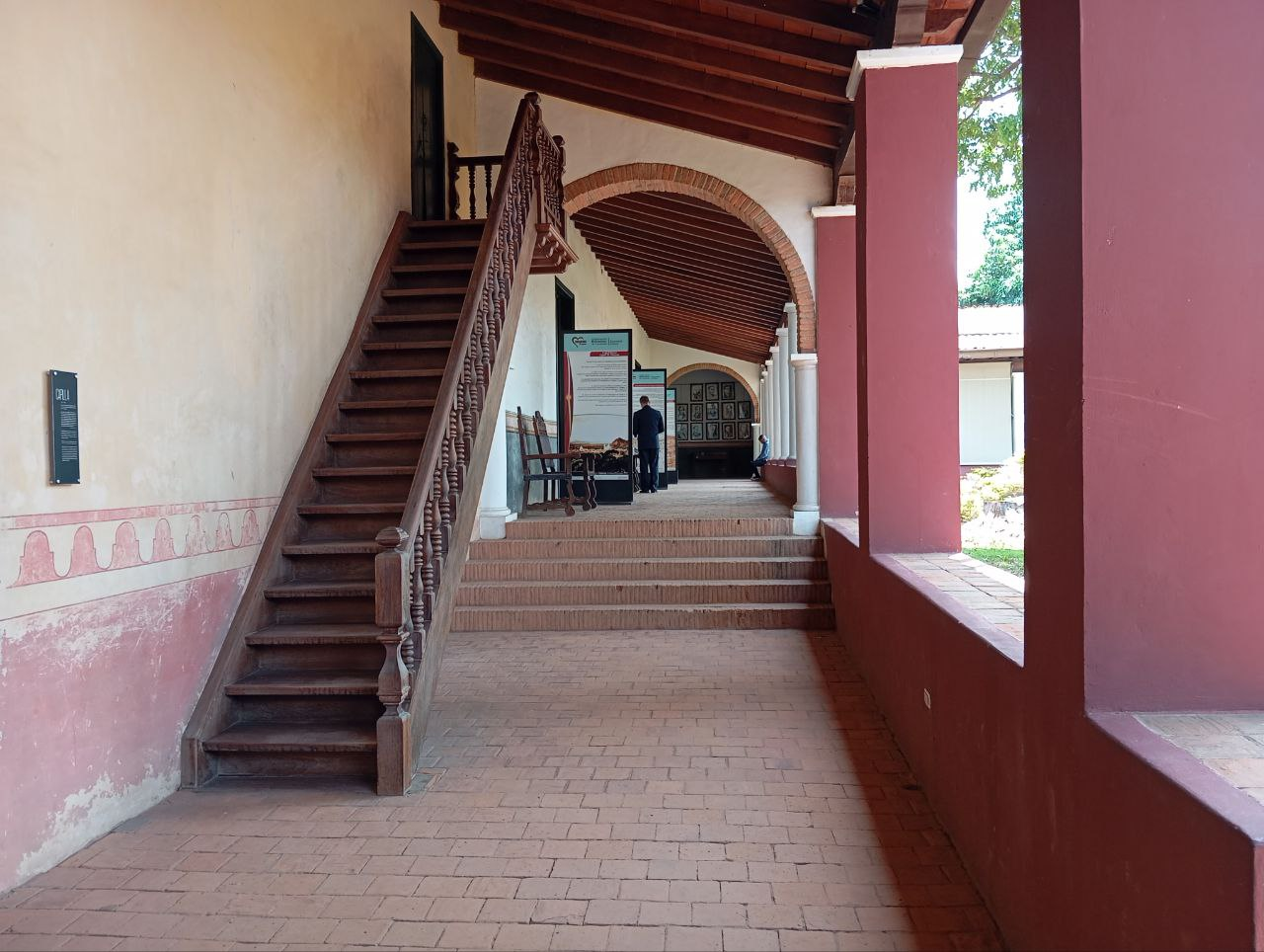
In addition to talking about Hive, these girls, who are the guardians and guides of the place, told me that this facility wasn’t always a museum; in previous centuries, it was one of the oldest houses in the city of Valencia, Venezuela, and that it holds immense historical value for the city and the country due to the various events that took place there. The guides told me that on February 15, 1812, when the city of Valencia became the capital of the Republic, the Casa de La Estrella (House of the Star) was the seat of the Congress of the United States of Venezuela. Prior to this, this colonial house was initially intended to house the San Antonio de Padua Hospital (1664). During the Independence era, it served as a meeting place for patriots, where momentous decisions for the nation were made.
A place full of stories and anecdotes, one of the interesting facts about this grand headquarters is that one of the most decisive decisions in a historical process well known to most of humanity was made here: The Separation of Venezuela from Gran Colombia. A historical event that undoubtedly determined the future of many nations.
Enraptured by all this information, I dedicated myself to what I was doing: taking photos, as my brain was already processing a lot of historical data. #
This museum houses some very old books, documents, and objects dating back centuries to the colonial era. One of the things I saw for the first time was a copy of the first newspaper published in Venezuela, “El Correo del Orinoco,” founded by Simón Bolívar. Imagine being able to see this great treasure protected here in glass cases. I also saw several historical documents and records from that time.
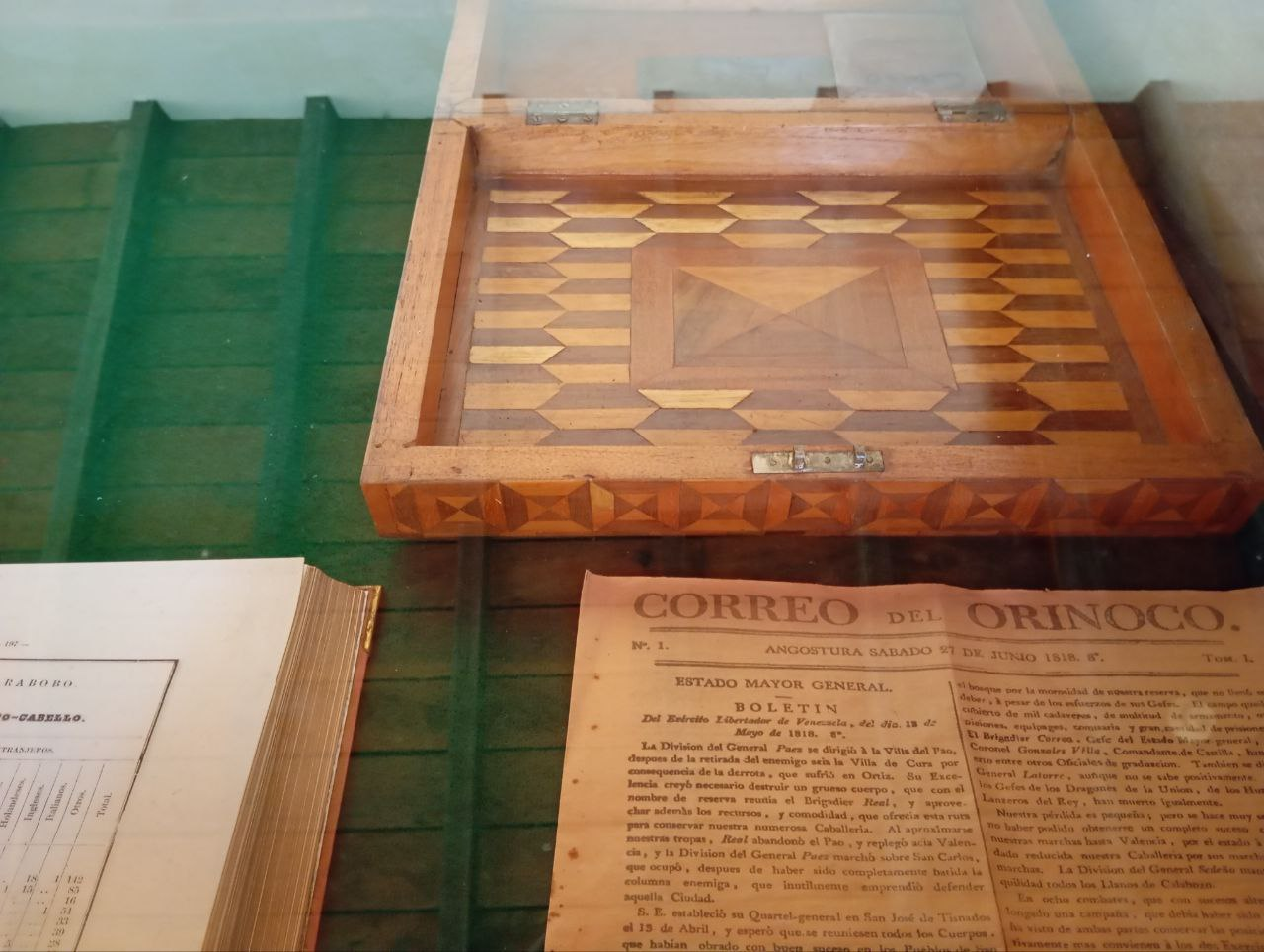 | 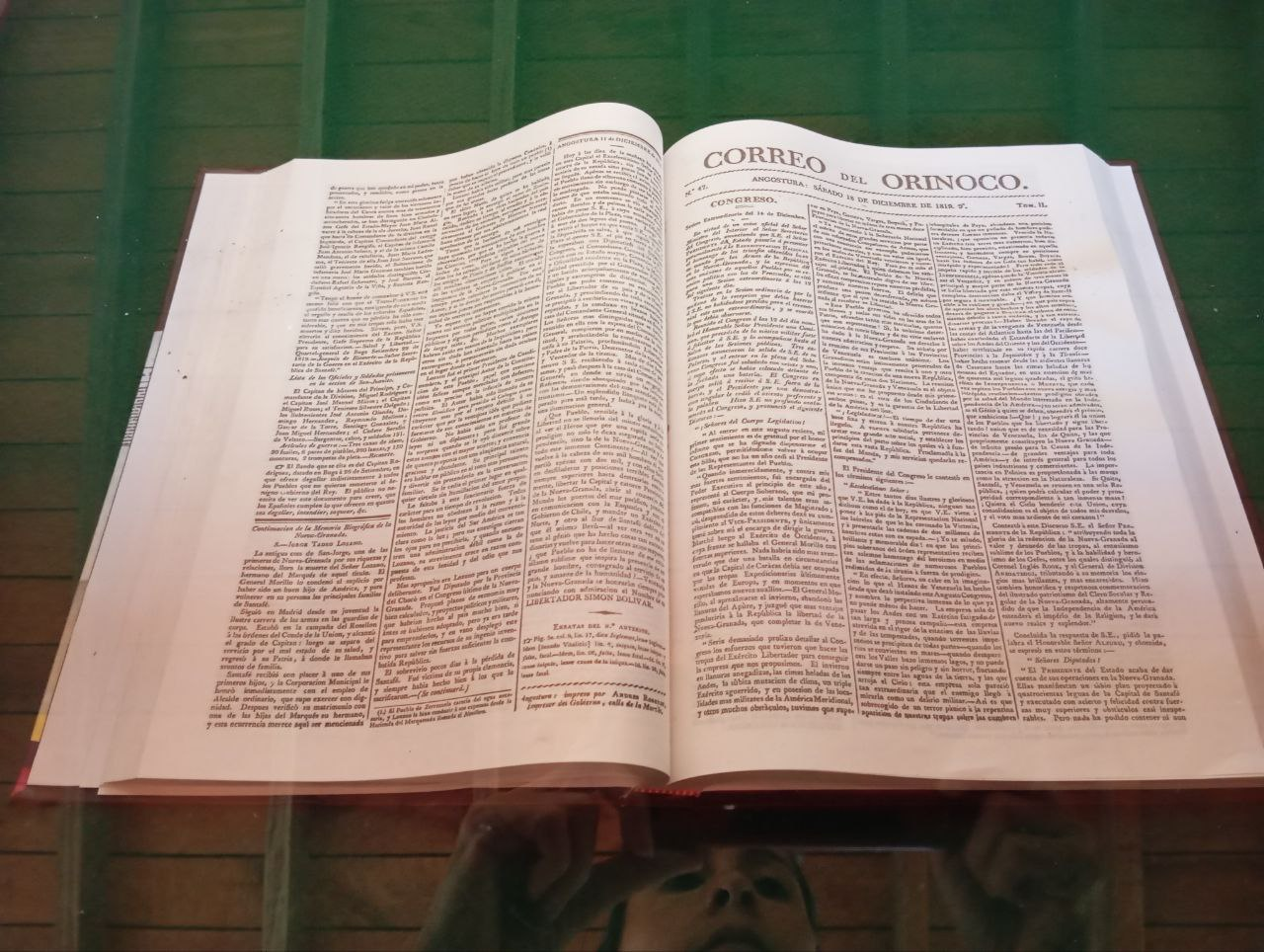 |
|---|
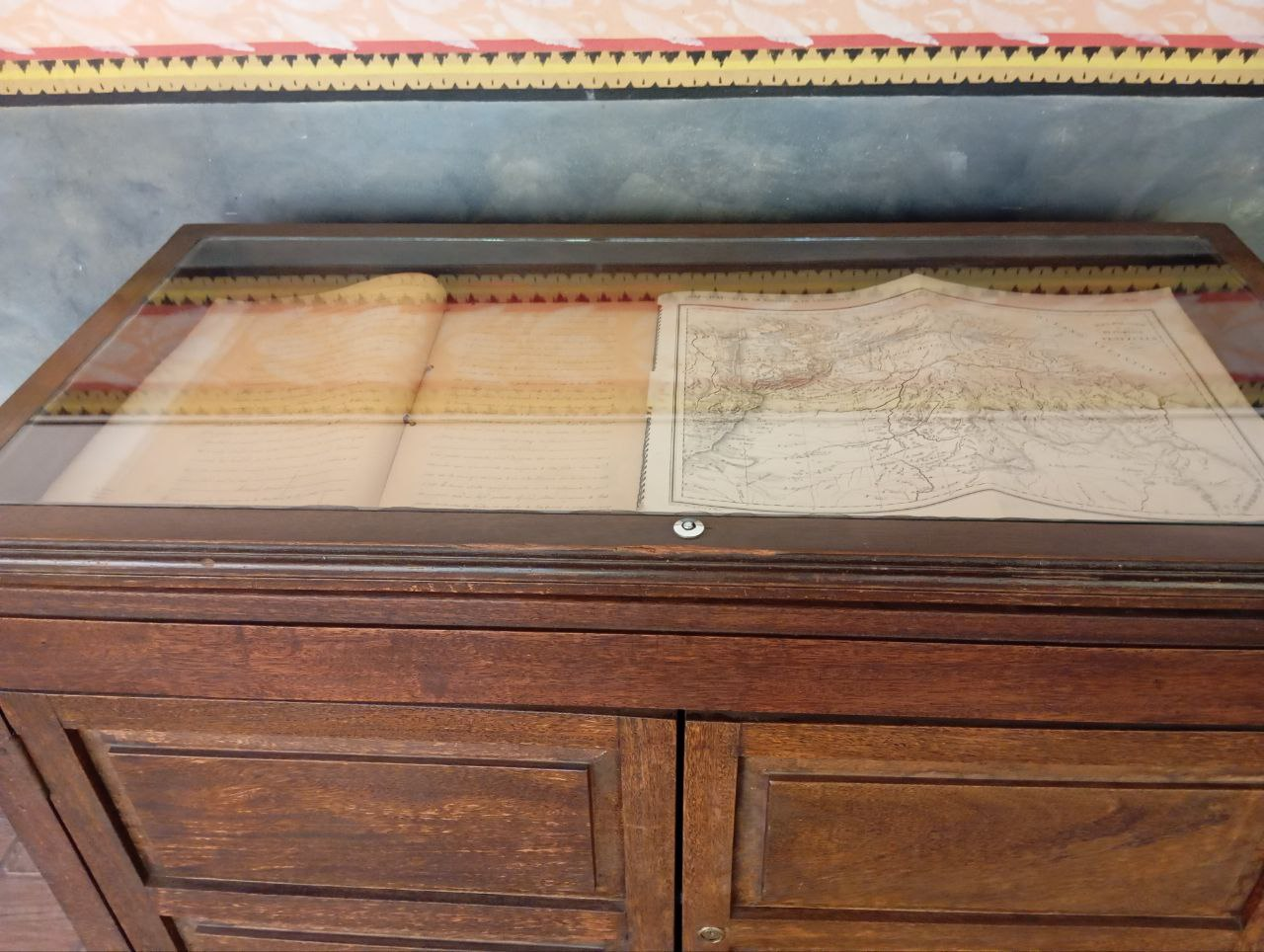 | 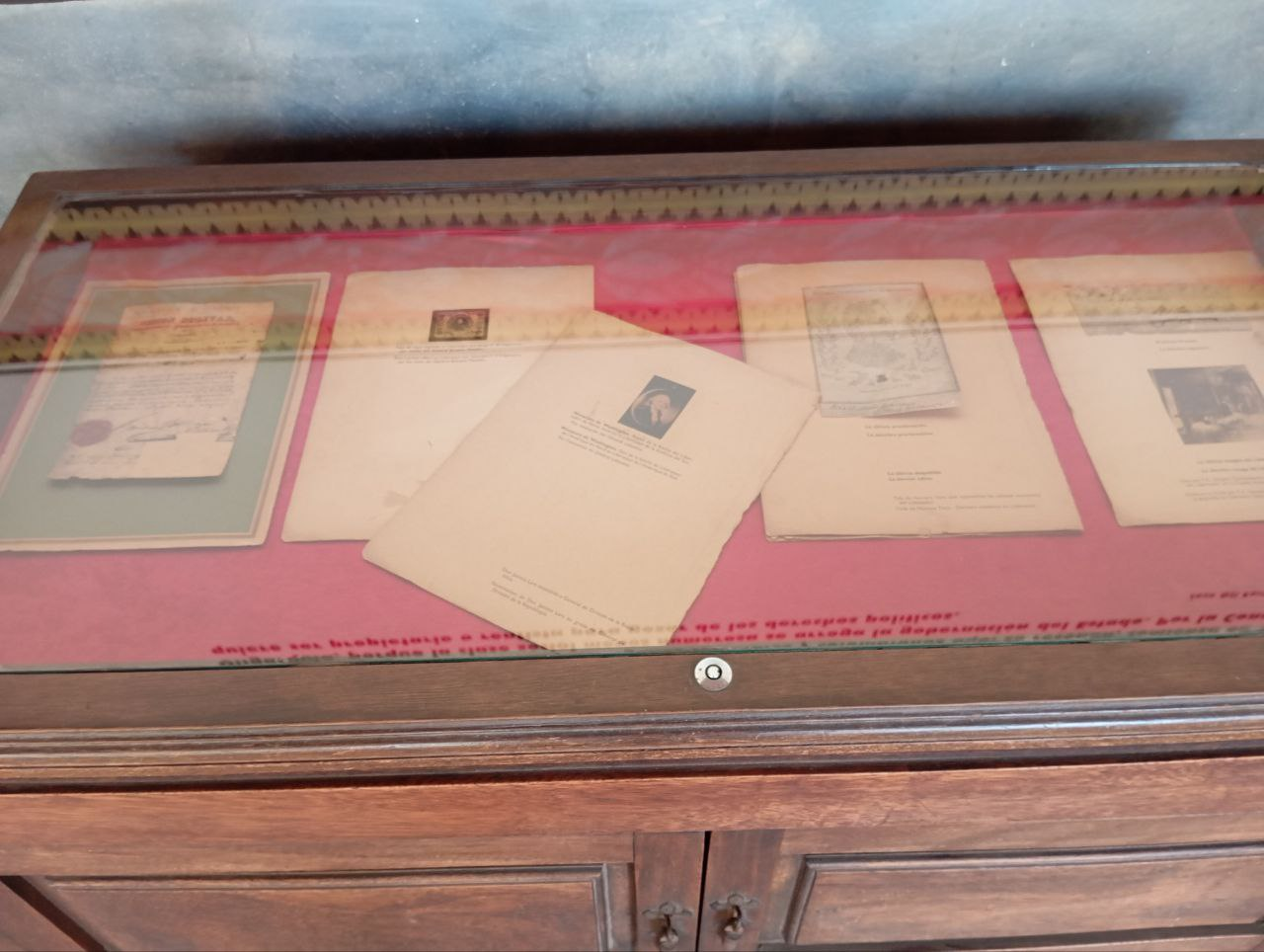 |
|---|
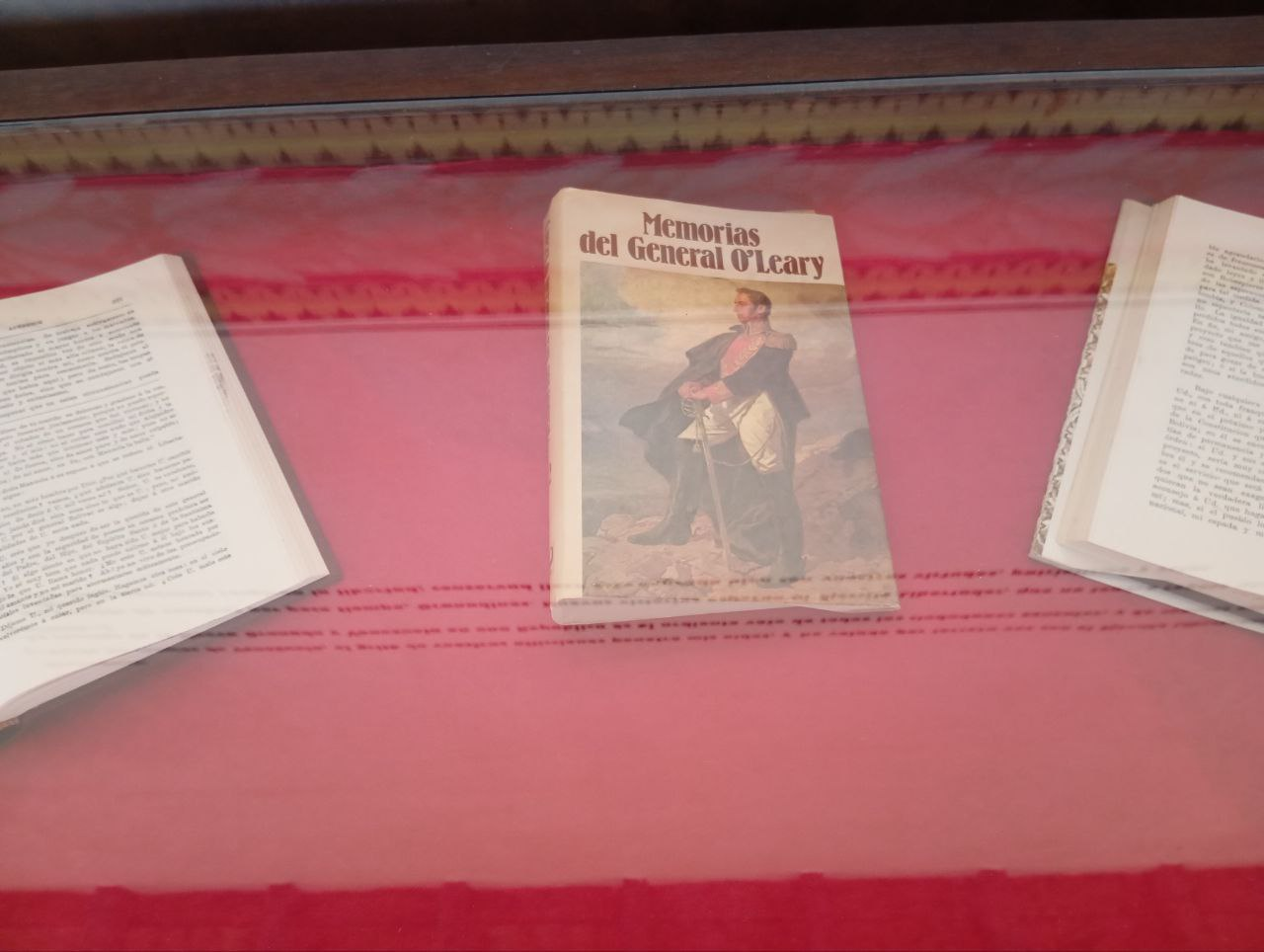 | 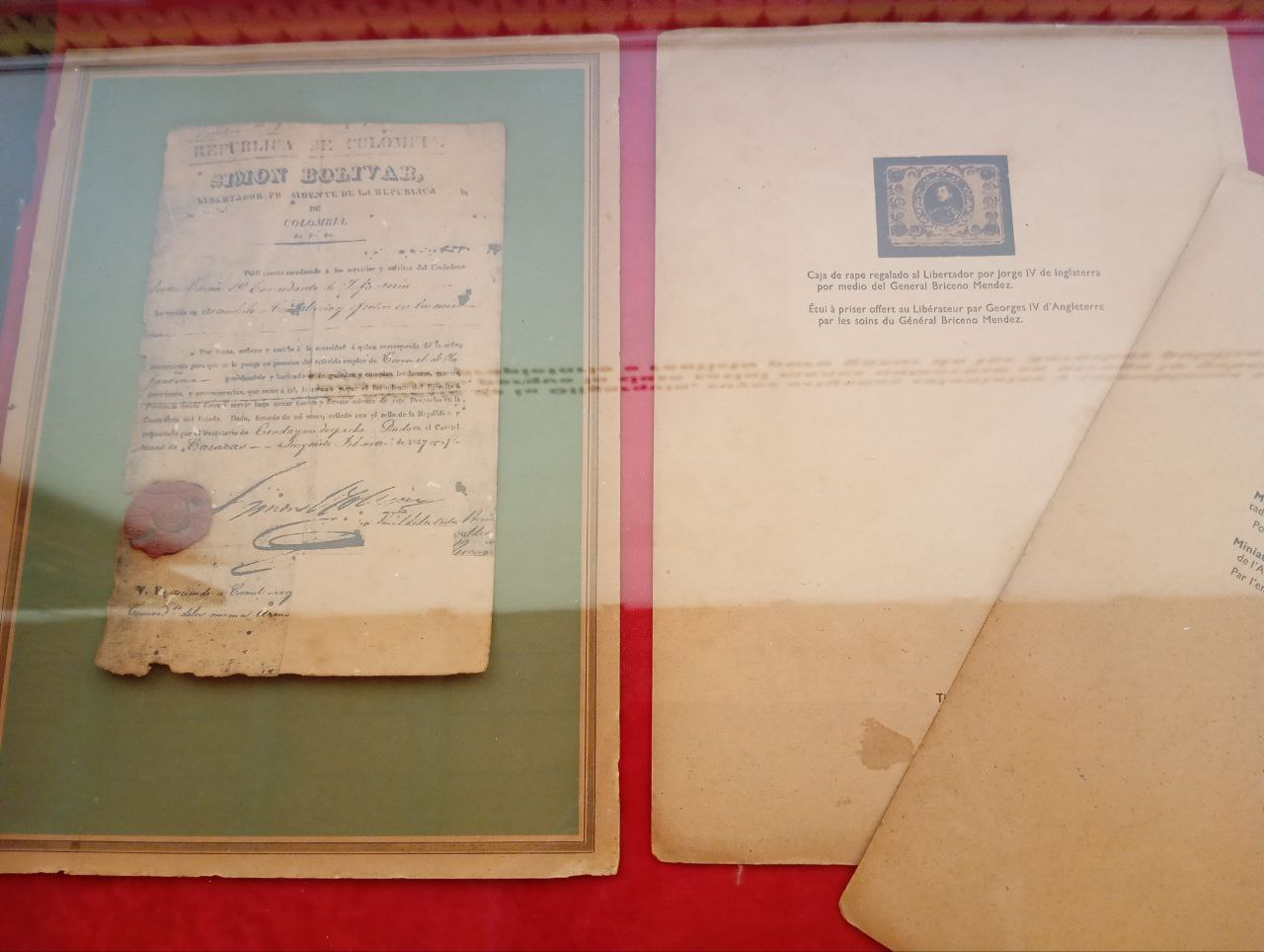 |
|---|
The reflection is visible because the documents are well protected to protect them from the elements.
 | 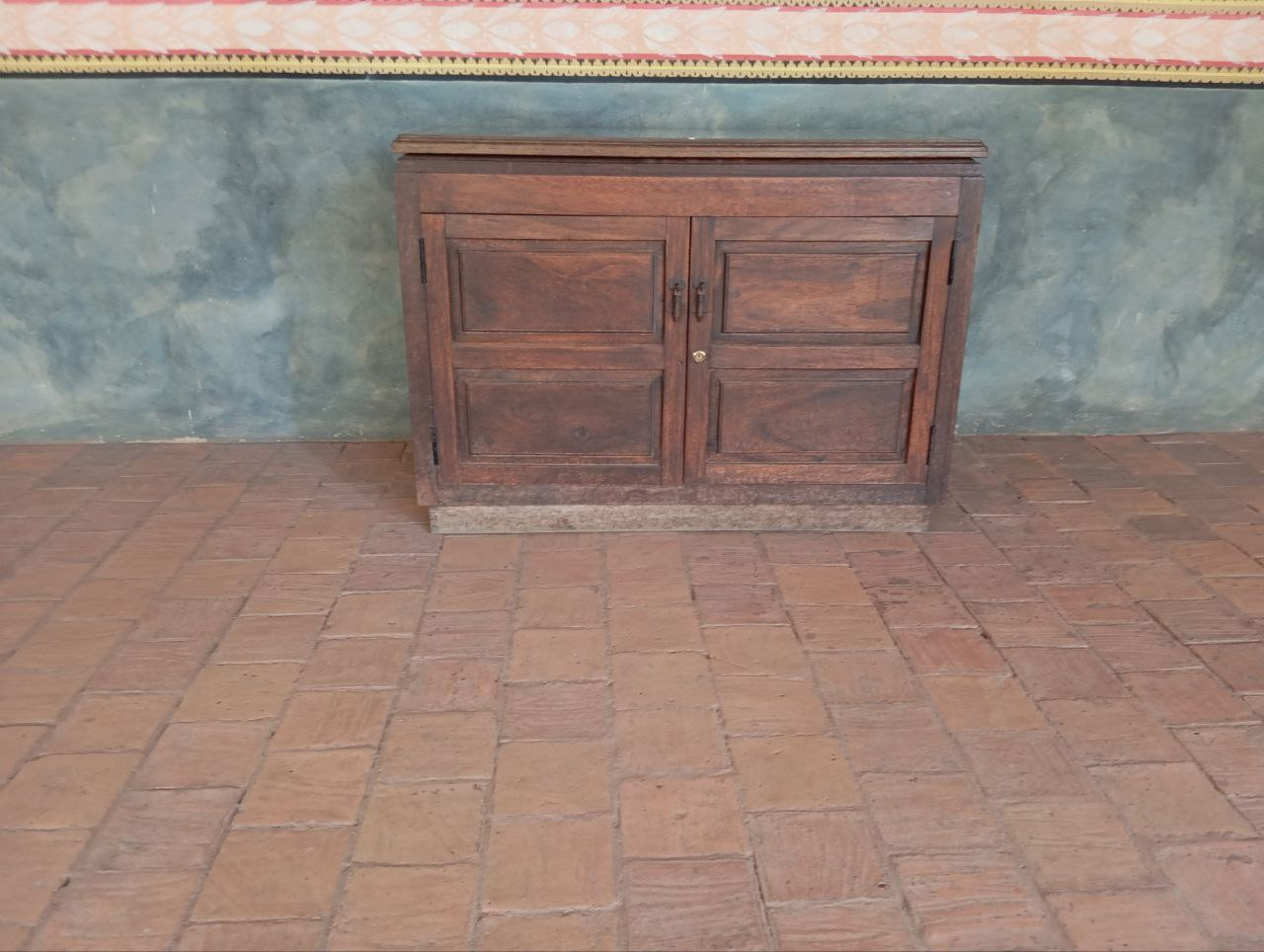 |
|---|
In addition to all this, I saw a beautiful painting by Gabriel Atencio. Oil on canvas, 200 x 300 cm.
Miranda’s Renunciation of the Title of Dictator, 2011
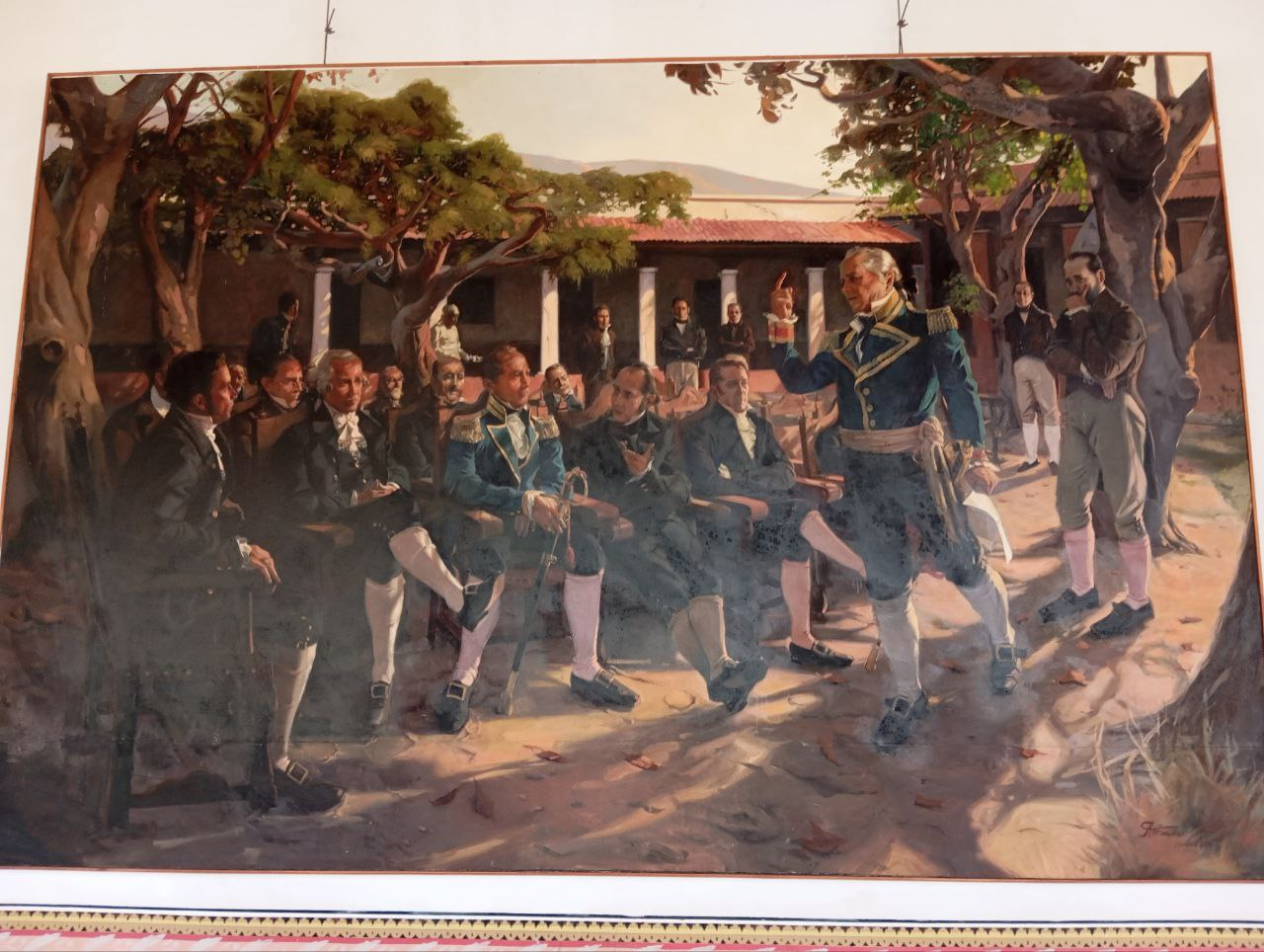
A beautiful painting, imposing on that wall that holds centuries of history, and I was there, careless, and accidentally took a heavily filtered photo because I wanted to look striking and impeccable for this sublime moment in history.
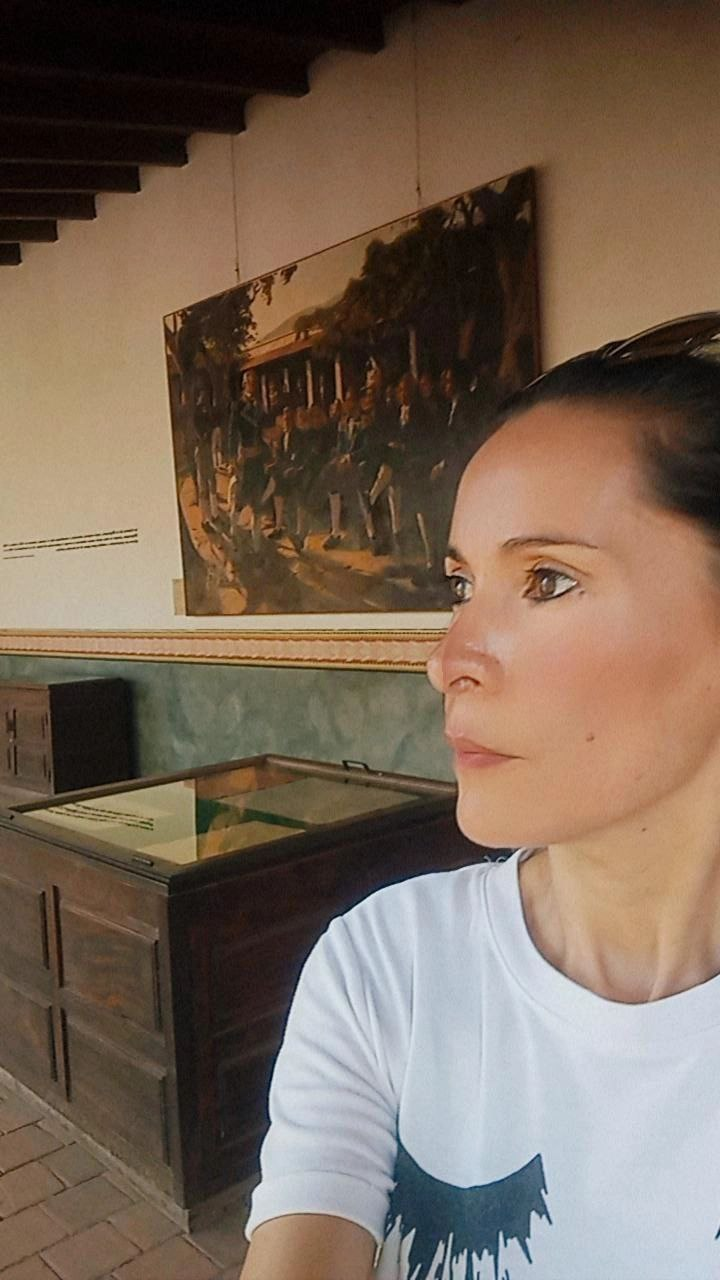
And another photo I took in a moment of carelessness when my cell phone camera accidentally activated.

I hope you enjoyed this tour of one of the historical sites in my city.
Blessings to all, see you in the next post. Take care.
Photos taken with a Redmi 13 phone
Original story by @cositav
Translated with Google Translate
Español
Saludos chicos de Hive y de la Comunidad de @actifit les cuento que hace poco estuve por la ciudad de Valencia acompañando a mi hijo a realizar unos trámites para certificar su título de bachiller técnico y revalidar sus notas, en eso andaba cuando observé una casa muy antigua ubicada en una esquina fel Centro de la ciudad, que tenía por nombre :
“Museo Casa De La Estrella”
En ese momento no pude entrar ya que tenía que hacer otras diligencias con mi hijo; sin embargo, pedí información y me dieron el horario de atención al publico y decidí volver a los días.
⌚️⌚️⌚️Días después⌚️⌚️⌚️
Así que hoy me activé con mi contador de pasós y aquí estoy trayéndoles mis experiencia en este hermoso lugar.
A simple vista no lo parece, pero en la entrada hay una inmensa puerta de madera que te da la bienvenida, al ingresar al recinto lo primero que llama tu atención es un inmenso techo de madera majestuoso



Hay una especie de sala de recibo donde se encuentran dos sillas de la época colonial y una rueda de alguna carreta que debió haber pertenecido probablemente al General José Antonio Páez

En ese mismo recibo en toda la entrada están estos dos maravillosos bustos, uno corresponde a nuestro Libertador y padre de la Patria Simón José Antonio de la Santísima Trinidad Bolívar Ponte y Palacios Blanco
 |  |
|---|
Y este otro correspondiente al General José Antonio Páez militar y político venezolano que luchó por la independencia de Venezuela y fue presidente del país en tres ooportunidades y uno de los que lideró el moviniento de La Cosiata en Venezuela fustrando el Gran Sueño de nuestro Libertador : La unión de la Gran Colombia.

Para mí dos grandes de la hisroria, cada quien con una visión diferente pero con un objetivo en común luchar por la libertad.
En este pequeño recibo también habían algunas láminas colgadas en la pared


Estaba maravillada de que hubiera tanta historia en tan pocos metros cuadrados, estaba en el paraíso de la historia de mi amado país. Todo lo que estaba presenciando tenía siglos de antiguedad.
Mi sorpresa fue aún mayor cuando observé este esplendido patio central ubicado dentro de la Gran Casa Colonial. Me transportó a la época colonial y me imaginé siendo María Teresa Josefa Antonia Joaquina Rodríguez del Toro Alayza esperando enojada a Simón Bolivar por no llegar temprano de sus batallas de independencia a cenar su plato favorito el platillo de el ‘palo e pique’, que consiste en un sofrito tradicional, acompañado de frijol, arroz y chicharrón.




En esos pensamientos estaba cuando veo un pasillo que me conduce a unas escaleras de ensoñación, estaba maravillada de lo que veían mis ojos en ese lugar, me vi tentada a subir y ver que se escondía al final de esa escalera pero pudo más la prudencia. Y además la puerta al final de la escalera estaba muy bien cerrada, como pude enterarme luego.


Al final de dicho pasillo me encontré con dos chicas encargadas del museo las cuales muy amablemente me preguntaron para qué motivo tomabas dichas fotos y cuál era el razón de sentirme tan maravillada por este lugar. Les expliqué que soy creadora de contenido y que estaba tomando fotos para subirlas a una plataforma llamada Hive, les expliqué someramente y me dijeron que no había ningún problema siempre y cuando no tocara temas políticos ni otro tema de índole conflictivo, les recalqué que mi objetivo es dar a conocer las cosas buenas de mi país. Así que continué con mi recorrido, no sin antes pedirles su contacto para hacerles llegar el post una vez publicado en Hive. Estuvieron muy felices de la propuesta, de hecho me dijeron que tal vez podrían interesarse en Hive y que si estaba dispuesta a darles información sobre cómo ingresar. Me puse completamente a la orden.

Además de hablar de Hive estas chicas que son las guardianas y guías del lugar me dijeron que esta instalación no siempre fue un museo; ya que en siglos anteriores fue una una de las casas más antiguas de la ciudad de Valencia, Venezuela y que posee un inmenso valor histórico para la ciudad y para el país por los diversos eventos que ella se suscitaron.
Las guías me dijeron que el 15 de febrero de 1812 cuando la ciudad de Valencia se convirtió en la capital de la República tuvo como sede del Congreso de los Estados Unidos de Venezuela a la Casa de La Estrella y que anterior a esto dicha casa colonial estuvo destinada inicialmente a ser la sede del hospital San Antonio de Padua (1664) y que en épocas de la época de la Independencia sirvió de lugar de reunión de los patriotas, donde se tomaron decisiones trascendentales para la patria.
Un lugar lleno de mucha historias y anécdotas, uno de los datos curiosos de esta gran sede es que aquí se tomó una de las decisiones más determinantes de un proceso histórico muy conocido por media humanidad : La Separación de Venezuela de la Gran Colombia. Un hecho histórico sin lugar a dudas que determinó el futuro de muchas naciones.
Embelesada por toda esta información me dediqué a lo que iba: tomar fotos, ya mi cerebro estaba procesando muchos datos históricos.
Este museo posee algunos libros, documentos y objetos muy antiguos que datan de siglos de la época colonial y una de las cosas que vi por primera vez fue un ejemplar del primer periódico publicado en Venezuela “El Correo del Orinoco” fundado por Simón Bolívar, imagínense ustedes poder ver esa gran joya protegida aquí en cofres de vidrio, además vi varios documentos y actas históricas de la época.
 |  |
|---|
 |  |
|---|
 |  |
|---|
Se ve el reflejo porque son documentos que están resguardados muy bien para conservarlos del inclemente tiempo.
 |  |
|---|
Además de todo esto vi un cuadro hermosísimo del pintor Gabriel Atencio Óleo sobre tela 200 X 300 cm
La Renuncia de Miranda al título de Dictador, 2011

Hermoso cuadro, imponente en esa pared que guarda siglos de historia, y yo allí descuidada sin querer me tomé una foto con mucho filtro porque quería verme impactante e implecable para este sublime momento con la historia.

Y otra foto que me tomé en un momento de descuido donde la cámara del celular sin querer se activó.

Espero les haya gustado este recorrido por uno de los sitios históricos de mi ciudad.
Bendiciones a todos, nos vemos en la próxima publicación. Cuidense mucho.
Fotos tomadas con un celular Redmi 13
Historia original de @cositav
Traducido con Google Traductor
This report was published via Actifit app (Android | iOS). Check out the original version here on actifit.io 
 02/04/2025
02/04/2025  6578
6578  Daily Activity
Daily Activity  Height 1.59 cm
Height 1.59 cm  Weight 45 kg
Weight 45 kg  Body Fat 30 %
Body Fat 30 %  Waist 60 cm
Waist 60 cm  Thighs 15 cm
Thighs 15 cm  Chest 50 cm
Chest 50 cm 



 0 AFIT
0 AFIT

 Actifit
Actifit